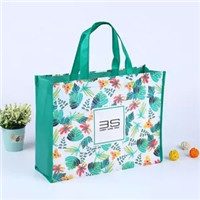The battle between non-woven bags and plastic bags continues to gain momentum as consumers and businesses seek more sustainable options for carrying and packaging goods. In this blog, we’ll delve into the differences between non-woven bags and plastic bags, highlighting why the former is considered a superior choice for the environment and the future.
1. Material Composition Discover the fundamental difference in material composition between non-woven bags and plastic bags. Learn how non-woven bags are made from fibers like polyester or polypropylene, while plastic bags are derived from petroleum-based materials.
2. Durability and Reusability Explore the durability and reusability of non-woven bags compared to plastic bags. Understand how non-woven bags can withstand multiple uses, reducing the need for frequent replacements.
3. Environmental Impact Uncover the contrasting environmental impact of non-woven bags and plastic bags. Learn how non-woven bags generate fewer greenhouse gas emissions and contribute to reduced plastic pollution.
4. Plastic Waste Reduction Discover how non-woven bags play a vital role in reducing plastic waste. Understand how their adoption encourages individuals to avoid disposable plastic bags that end up in landfills and oceans.
5. Circular Economy Contribution Explore how non-woven bags align with the principles of the circular economy. Learn how their durability and potential for recycling support the sustainable use of resources.
6. Changing Consumer Behavior Understand how the choice between non-woven bags and plastic bags reflects changing consumer behavior. Discover how more individuals and businesses are opting for eco-friendly alternatives to traditional plastics.
In conclusion, non-woven bags emerge as the sustainable choice when compared to plastic bags due to their environmentally friendly composition, durability, reusability, reduced environmental impact, contribution to plastic waste reduction, alignment with the circular economy, and reflection of changing consumer behavior. By making the switch to non-woven bags, individuals and businesses contribute to a greener and more sustainable future.






























